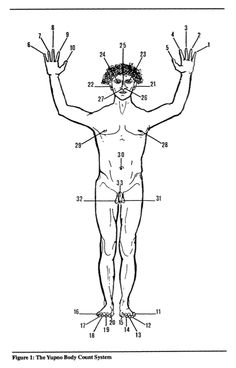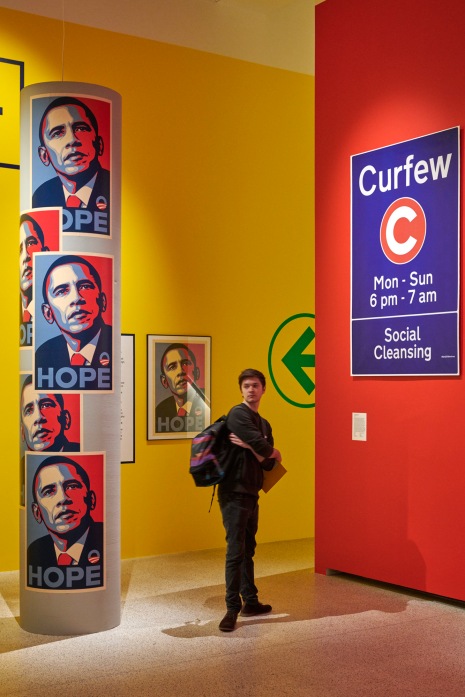This blog post started out as simple notes on a short essay by the noted historian of the ancient world, Sir Moses Finley (1912 to 1986) – until I stumbled on the wider context of the essay on the internet, which I then try to summarise.
Aulos Kapreilios Timotheos, Slave Trader
The essay ‘Aulos Kapreilios Timotheos, Slave Trader’ was published in the early 1960s, then included in a slim Pelican paperback collection, ‘Aspects of Antiquity’, published in 1968, which I picked up sometime in the 1980s.
It is far from being a big definitive essay on the huge subject of slavery in antiquity. Rather, it’s a set of meditations which flow from contemplating just one artifact from the ancient world, a seven-feet-high, finely decorated marble tombstone to this man, Aulos Kapreilios Timotheos.
The tombstone
This tombstone was found at a town near the border between modern Turkey and Greece. It shows three carved scenes: a typical banquet at the top; a work scene in the middle; and on the bottom, a depiction of 8 slaves, chained together by the neck, being led in single file, accompanied by two women and two children, not chained, preceded by a man who is obviously in charge. Between the top and second row is an inscription in Greek, reading:
Aulos Kapreilios Timotheos, freedman of Aulos, slave trader
Apparently what makes this stone rare and unusual is its blunt candour. In the scattered writings we have from the ancient world slave trading was looked down on, sometimes despised, which is odd because the entire economies of ancient Greece and Rome relied on slaves in enormous numbers. But clearly, the writing classes – the people who left opinions for us to read – were ambivalent about it at best.
The American South
Finley compares and contrasts the situation in the ancient world with that in the Southern United States in the nineteenth century. American slave owners were uneasily aware that the rest of the civilised world had abolished slavery and strongly disapproved of them. Hence their increasingly anxious over-compensating justification of the ‘peculiar institution’.
The ancient Greeks and Romans had no external voice of conscience to upbraid them. The reverse. Everywhere they looked they saw all other societies of their time practising slavery.
The racial justification for slavery
The slave society of the Deep South justified its exploitation with widespread propaganda about the intrinsic inferiority of black people. You don’t read far in any text about the American civil war without coming across southern ideologues using the Bible or any other spurious means they can lay hands on to justify the intrinsic superiority of whites and the intrinsic inferiority of blacks. Plenty of authors and politicians claimed that blacks could only find true happiness in the condition of slavery, blacks are children who need the strong hand of a father etc etc.
So a black person in America could never lose the stigma associated with slavery, even if they were free, even if they lived in the north, ran a business, lived a free life, could never be completely free.
The raceless basis of ancient slavery
The situation was drastically different in the ancient world because slavery wasn’t associated with any particular race or ethnicity. Literally anyone could be enslaved – in Spain, in Gaul, in Greece itself, conquering Roman armies enslaved entire cities of white Caucasians.
The crucial point is that there were no specifically slave races or nationalities. Literally anyone and everyone might be enslaved, and which groups predominated at one time or another depended on politics and war. (p.157)
The association of slavery with skin colour was an invention of the Atlantic slave trade of the 17th and 18th centuries.
Freed names
Back to Aulos – his first two names, Aulos Kapreilio were those of his master, which he took when he was made free, as per Roman custom. Timotheos was his slave name.
Roman slave names
In the early days of slavery Romans gave their slaves names like Marcipor or Lucipor which was simply a contraction of Marcus puer or Lucius puer, puer being Latin for ‘boy’ (hence the English word ‘puerile’, which has come to mean ‘childishly silly and immature’).
From the year of the twin defeats of Carthage and Corinth, 146 BC, the number of slaves began to steadily increase and so they needed more names.
After 146 the empire became unofficially divided into a Latin-speaking West and a Greek-speaking East, and so slave names sometimes indicate a slave’s origins, east or west.
Side
A city on the south coast of Anatolia, became notorious as a slave market. But maybe the epicentre of the ancient slave trade was the island of Delos
The people of Phrygia in central were notorious for selling their own children into captivity. Many slaves from Scythia (the area to the north of the Black Sea) were bought from their own chieftains, captives in their own wars, or children, or simply human levies, like tax, sold at a profit (p.163).
Slave sales
Given the millions of men, women and children who were slaves it is notable that we have just two visual depictions of an actual slave auction. In both of them a male slave stands on a platform while another man, presumably the buyer, lifts his tunic to admire his strong thighs.
The condition of a slave
is to be brought into a new and alien society violently and traumatically; to be torn not only from his homeland but from all the relationships which provide identity and psychological stability, with family, kin, tribe, village, region, gods, customs, dress – everything.
All this is replaced with just one cardinal relationship – with the slave’s male owner who controls not only every aspect of his physical existence, but his mental horizons, the language he has to use, the new religion he has to practice, rules he has to obey – everything.
Slave sexual exploitation
Complete control over the person of slaves meant the master class had unfettered unlimited sexual access to all slaves, male, female, young or old. As I’ve read the chatty odes of Horace or elegiacs of Tibullus, Propertius or Ovid, I have been disturbed again and again by the casual way they talk about being ‘given’ slaves (of either gender) for sexual purposes.
Slave punishments
The most chilling thing for me, though, has been the casual references, in all the Roman literature I’ve read from Plautus onwards, of the horrific punishments slaves could be subject to, starting with whipping and escalating through torture, having limbs deliberately broken, and so on, up to the ultimate punishment of crucifixion.
Finley returns to the attempts of Americans to justify slavery through the intrinsic inferiority of one race and say not only was it not attempted in the ancient world, it was actively disproved by the case of the Greeks.
Greek revenge
After the brutal conquest of the Greek League in 146 BC, over the next few centuries hundreds of thousands of Greek men, women and children were brought back to Italy as slaves. However, in the long term this caused a kind of cultural revolution. The Gauls or Germans might have been considered ‘barbarians’ (they wore trousers, for God’s sake!) but the Greeks were citizens of the culture which had taught the Romans literature, philosophy and architecture. Hard to maintain the fiction that these people were in any way ‘inferior’. On the contrary many of them, while remaining technically ‘slaves’, rose to become secretaries, assistants or teachers to the master’s children.
Manumission
This leads into another important issues, which is manumission, which is the fancy word for freeing your slaves. The Romans became famous among the cultures of the ancient world for freeing their slaves, as reward for loyal service. It was a disconcertingly simple procedure – the owner declaring the slave free, maybe touching them or gently pushing them away, and a state official such as a consul or a praetor touching the slave with a rod called a vindicta and pronouncing him or her to be free.
The slave’s head was shaved and a pileus was placed upon it. The pileus was a brimless felt cap of undyed wool. Based on what we can see in surviving frescos, sculptures, and coins, the pileus ranged from a short cone to a gumdrop shape. It was the identifying garment of a freedman.
Anyway, we know that the rate of manumission became a real problem in Roman society because the emperor Augustus passed laws trying to limit it:
He established maxima on a sliding scale, according to which no one man was allowed to free more than one hundred slaves in his will. (p.158)
Finley points out a notorious contradiction in Roman attitudes to slavery: which is that noted jurists such as Florentinus clearly stated that slavery as an institution was ‘contrary to nature’, that this idea was shared in some of the literature and incorporated into legal codes – and yet it didn’t make any difference to the actual practice.
He instances the moral philosopher Seneca who freely admitted that a slave is a person with a soul like you and me, but from this premise he draws the conclusion that one should live on friendly terms with one’s slaves, dine with them, converse with them etc – everything except actually free them, which seems beyond the scope of his philosophy (p.164).
War
Because, as Finley points out, war was central to the entire institution of slavery and the slave trade.
The ancient world was one of unceasing warfare, and the accepted rule was that the victor had absolute rights over the person and property of the captives, without distinction between soldiers and civilians. (p.159)
Caesar
went to Gaul an impoverished nobleman and returned a multi-millionaire and this was partly because of the huge number of captives he seized and sold into slavery, taking a commission. After he captured the town of the Atuatuci he sold the entire population of 53,000 into lifelong slavery. After the Battle of Alesia in 52 BC he gave one captive to every one of his legionaries.
War slavers
Enormous numbers like this would slow an army down so by Caesar’s time arrangements were in place to have slave traders accompany the army, or meet them at arranged rendezvous, there to buy the newly captured slaves, take them off the commander’s hands, and do with them as he please, tramp them all the way back to Italy or sell them locally.
Maybe the procession on Timotheos’s tombstone depicts such a merchant marching off some of his new merchandise.
Pirates
From a business point of view the problem was the extreme unpredictability of war. Hence the inexorable rise from 150 or so onwards of piracy in the Mediterranean. This wasn’t a case of a few swashbuckling privateers but ‘a complex business network of pirates, kidnappers and slave dealers’, with its headquarters at Side and its main emporium on the Greek island of Delos. Finley quotes the figure I’ve read elsewhere that the docks and warehouses of Delos were extended so that at its peak it turned over as many as 10,000 slaves a day.
(On the subject of scale, Finley says that as early as the 4th century BC the number of slaves working in Athens’s silver mines was probably as high as 30,000.)
Latifundia
The rise and rise of slavery went hand in hand with a crucial socio-economic development in mainland Italy. This was the eradication of the small family farm – the kind of place which Virgil and Horace idolised as the cradle of morality and right living – and its replacement by vast estates or latifundia owned by enormously rich absentee landlords and worked by slave gangs often working in chains.
The servile wars
The scale of the exploitation and the resentment it bred led to the three major slave revolts which escalated so far as to be called ‘wars’, the so-called Servile Wars:
- First Servile War (135 to 132 BC) in Sicily, led by Eunus, a former slave claiming to be a prophet, and Cleon from Cilicia
- Second Servile War (104 to 100 BC) in Sicily, led by Athenion and Tryphon
- Third Servile War (73 to 71 BC) on mainland Italy, led by Spartacus
Training
Specialist skills were in great demand. If a slave could play music, recite poetry, take dictation or any number of other skills then he or she might secure a relatively comfortable lifestyle. Alternatively, slaves could be trained, specially if started young.
Many slaves became masters of crafts and trades; the chain-ganged brute labour of the countryside was matched by highly skilled slaves in more urban settings who worked in potteries or textile mills, on temples and other public works, sometimes performing artistic and delicate work.
The sheer number of slaves present at every level of Roman society, participating in a huge range of activities, suggests the ‘condition’ or psychology of slavery must have been hugely varied, as varied, maybe, as the number of individual slaves.
The end of ancient slavery
Slavery ended not because of any abolitionist movement but because of profound socio-economic changes in the Roman Empire. These slow economic transformations replaced both the ‘chattel slave’ and the free peasant of Virgil and Horace’s dreams, with a new social class, a new type of ‘bondsman’ – the colonus, the adscripticius, who was himself to evolve into the serf.
For the most part. But slavery didn’t disappear from Europe, not even from the Empire. Finley tells us that when the sixth-century emperor Justinian drew up a codification of all existing laws, the issues thrown up by slavery took up more space than any other topic.
The essay in the context of Finley’s career
Online you can read the first page of an essay about Finley and slavery by the American academic, Arnaldo Momigliano. This tells us that Finley had a lifelong interest in the question of slavery in the ancient world and that the present essay repeats some themes and ideas already discussed in his 1958 essay, ‘Was Greek civilisation based on slave labour?’ (itself included in a 1960 collection, ‘Slavery and Classical Antiquity’) and takes its place alongside other papers on the subject gathered in the 1981 volume, ‘Economy and Society in Ancient Greece’.
Apparently, Finley’s ideas about slavery were most fully expressed in the book-length study, ‘Ancient Slavery and Modern Ideology’, published in 1980 (so when he was 68). If you go looking for it on Amazon, you find the latest imprint of the book and discover that it was republished in 1998 with new material by an academic named Brent Shaw.
This volume, ‘Ancient Slavery and Modern Ideology’, isn’t a history of slavery as such, it’s an account of the interpretations succeeding ages have made of slavery in the ancient world, according to each era’s ideologies and principles. In what follows I’m indebted to the excellent review of ‘Ancient Slavery and Modern Ideology’ on Amazon by Richard Mathisen. To be clear, I’m putting Mathisen’s words in italics.
Richard Mathisen’s summary of ‘Ancient Slavery and Modern Ideology’
For Finley, there have been only five genuine slave societies, two ancient (Greece and Rome), and three modern (the Caribbean, Brazil, and the American South).
Historians of ancient societies have always been affected by ideological bias. Classical historians admired Greek and Roman civilisations so they downplayed the ugly aspects of slavery. Christian historians tried to claim that Christianity ended slavery, but it didn’t. Marxist historians wanted to interpret ancient slavery through their lens of class war while anti-Marxist historians took the opposite view.
While ancient slavery had no racial component, modern historians are influenced by racial concerns so that every “new interpretation of slavery has professed to be more anti-racist than the one it replaces.”
Finley’s aim is to trace the distorting effect of each of these ideologies on the history of slavery. Finley explains the emergence of ancient slave societies, which requires three conditions: private ownership of land, commodified systems of production, and a shortage of labour. He considers societal attitudes toward the humanity of slaves and traces the end of slavery as it transitioned into feudalism.
Finley carefully defines slavery, because many examples of forced labour have existed, including Egyptian pyramids, Assyrian and Babylonian empires, Spartan helots, feudal serfs, and indentured servants, but they were not slaves. Indeed, he notes that the most unusual labour system in history is modern free wage labour, with individuals free to move.
This leads to Finley’s real interest. What factors led to ancient slavery? When did it start, when did it end, and why? What aspects of ancient society were part of slavery’s support system? What were the ideological presuppositions of the Greeks and Romans? Why was the legitimacy of slavery never questioned in ancient times, even during slave revolts? Why did slavery exist only in certain areas of Rome, such as Italy and Sicily? Could slavery ever come back again in the modern world, if the necessary conditions seemed to demand it?
When re-issuing Finley’s book, Brent Shaw added a 1981 response by Finley to his critics and a 1979 essay on “Slavery and the Historians.” Shaw himself wrote a 76-page essay updating the slavery debate since 1980.
The vast historiography of a complex subject
All this builds up to quite a complex picture which can be summarised as:
- during his career Finley wrote a number of essays about slavery in the ancient world
- his main statement on the subject is a book which describes the changing interpretations of ancient slavery made by the leading ideologies of different eras
- critics criticised this book
- Finley wrote an essay addressing these criticisms
- Brent Shaw added a long essay updating the debate since 1980 (presumably up till 1998, when this new edition was published)
But quite obviously a lot of this is very old. When I skimmed through the passages of ‘Ancient Slavery and Modern Ideology’ available on Amazon, I caught references to the Soviet Union. The idea of describing an aspect of the ancient world as it has been interpreted, reinterpreted and misinterpreted by the leading ideologies of successive ages sounds really interesting, but…1980. Surely I ought to be reading something far more up to date.
And then, when I saw that the Arnaldo Momigliano essay about Finley had been published in a periodical titled ‘Slavery and Abolition: A Journal of Slave and Post-Slave Studies’, my heart sank. Every month or so since the late 1970s this journal has been publishing articles about slavery. By now there must be a mountain of content – and I bet there are other journals on the subject, not to mention the hundreds of thousands of academic papers and tens of thousands of books, and hundreds of conferences which must have been held on the subject. How long would it take to read all the relevant studies, paper and books on the subject? A year? Three years? I’d like to learn and understand more but do I have the time required? Does anyone have the time?
Credit
‘Aulos Kapreilios Timotheos, Slave Trader’ was included in a collection of essays by M.I. Finley titled Aspects of Antiquity, published by Penguin books in 1968. References are to the 1977 Penguin paperback edition.





























